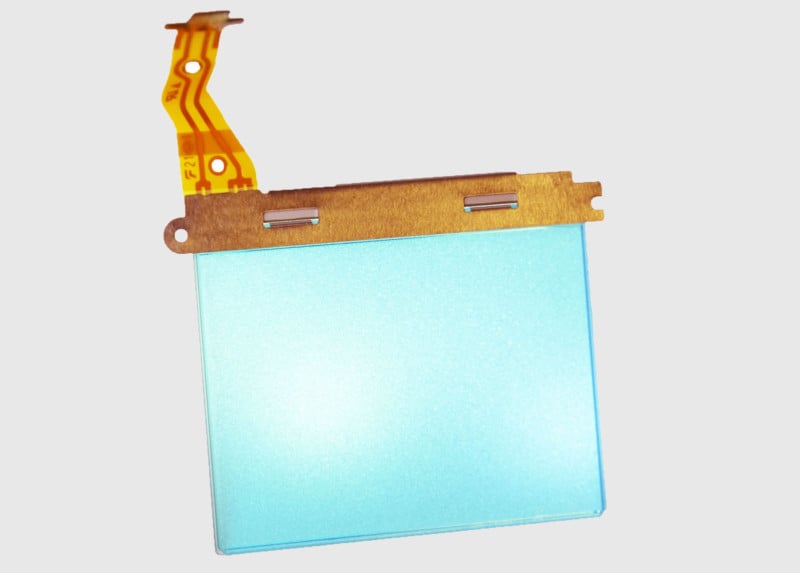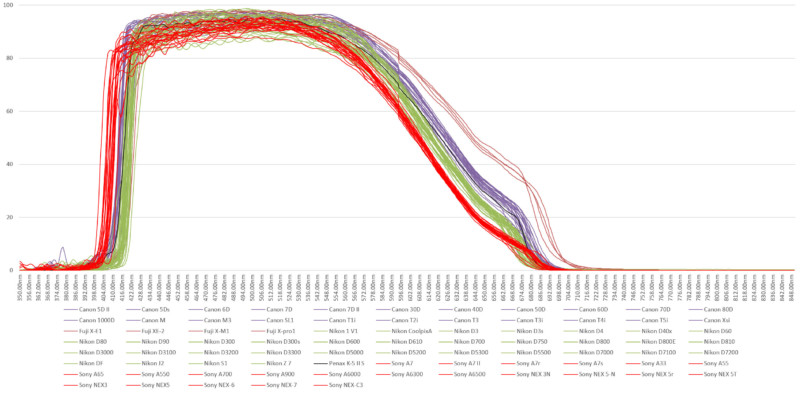Do I Need Uv Filter For My Lens
![]()
We're going to ask a controversial question: What practise UV filters practice, exactly? A UV blocking filter, (not to exist dislocated with a UV Bandpass filter, which has the contrary function) is perhaps the nigh standard lens filter out there. Information technology'south sold with every beginner lens filter kit forth with polarizers and ND filters, and sometimes it'll fifty-fifty send with your camera.
The filter itself sounds simple enough: a filter that blocks UV lite. But, what does that mean, and why is blocking UV light something we want to do? Lenses themselves have many drinking glass elements and coatings that block UV light. Furthermore, every digital camera model leaves the factory with a bluish-green piece of IR/UV blocking glass over the sensor preinstalled. Is this glass insufficient? Do we really need more to right for UV calorie-free contamination?

Shooting with a UV lens filter seems less necessary with modern cameras and eyes. The color science of different camera models and sensors seems to have more of an impact on subtle differences in an prototype'south color and biases than annihilation else these days. Almost people who've casually used a UV filter in recent years probably couldn't tell much of a difference betwixt their photos with and without the extra drinking glass.
Many others will say they but thread on a UV filter to protect their lens, which makes intuitive sense. A layer of clear glass between the outside world and your $one,000+ front element sounds similar cheap insurance, the thinking photographer's move. To our surprise, the manufacturers will tell you this is absolutely not the case, as Usman Dawood discovered in his article earlier this month.
Many photographers will still insist that lens protection is the primal benefit here, just makers of UV filters clearly land they are made to stop UV low-cal. Lens protection is largely claimed as a secondary benefit. What, then, is the scientific basis for using a clear glass filter to eliminate the influence of UV light with mod cameras?
Many Means to Photograph a Rainbow
At Kolari Vision, where I work, we catechumen and design cameras and filters for photography and videography beyond the visible light spectrum, into the infrared (IR) and ultraviolet (UV) wavelengths. Spectral assay is a central part of what we do. Knowing which wavelengths are existence transmitted into the last image and to what magnitude is essential.
We wanted to know how much UV light is fifty-fifty reaching a modern digital camera sensor in the first place, and whether in that location is enough to make an effort to block it necessary.
While all cameras are made with the aim of recreating the visual light spectrum (400nm-700nm) that we come across with our optics, spectral transmission varies somewhat by camera model and even further between brands. So, we compiled the transmission curves of 82 cameras fabricated in the last 10-fifteen years including Canon, Nikon, Sony, Fujifilm, and 1 Pentax to make up one's mind which cameras, if whatever, might benefit the almost from using a UV lens filter.

The Ultraviolet (UV) spectrum begins at 400nm and continues to the left beyond the edges of this chart. A adept quality UV filter should exist blocking any part of these lines that goes beneath that 400nm mark. The curve below by LensTip is an example of a (good) UV filter transmission curve. In this case, the Hoya HMC UV-0 illustrates the issue very well.
![]()
If you dig through the data in the LensTip commodity (which we highly recommend, they provide a not bad resource), you'll find that UV filters have UV cutoff points that are all over the place, starting at 330nm up to 395nm or so. The 330nm cutoff Hoya and Tiffen filters are especially egregious, this ane would not fifty-fifty cake our UV Bandpass filter wavelengths which are 365nm centered.
In fact, standard uncoated glass tends to lose UV manual around 350nm. Only even if yous pick a improve UV filter that cuts UV at 395nm, you will detect you are still below where mod digital cameras already cut out UV. We compiled the average cutoff point for each make we analyzed below.
![]()
Equally you can meet, every make cuts UV more aggressively than standard UV filters. It is interesting to note that while Nikon Fuji and Pentax cut at around 420nm, Catechism is a petty weaker at 416nm, while Sony in full general allows the virtually UV light through cutting down at 409nm. Each individual camera is different, and we wait newer cameras will start budgeted the 420nm cutoff point beyond the board eventually.
Will Any UV Filters Do Anything for Your Photos?
Overall about UV filters don't cake whatsoever additional light from reaching your sensor, your sensor is already filtering UV light more aggressively than typical UV filters. This effectively makes your UV filter a articulate piece of glass.
There is, even so, some pocket-size combination that could do something. A very aggressive UV filter with a 420nm cutoff point could help on Sony or Canon cameras that generally have slightly weaker UV filters built in than Nikon, Fuji, and Pentax. Depending on your specific model, your Nikon or other model may also have a weaker internal UV filter and could stand to benefit slightly from the actress UV filtration to bring it up to the modern flagship standards.
We are launching our own filter like this soon to do just that. One more than matter to note is that yous will sometimes see the term UV Haze filter. Haze filters are advertised equally stronger UV cutoff filters than apparently UV filters, but accept this with a grain of salt. Many UV Brume filters that nosotros checked still only cut off around 400nm.
Did Basic UV Filters Ever Do Anything?
At this point y'all may be thinking, if UV filters don't do anything on a new camera, are they a scam? Did they e'er exercise anything? The answer is certainly! In film photography, UV can admittedly exist an issue and something that is worth filtering out. Even in the early days of digital, many cameras were non filtering UV out well at the sensor level and UV filters helped. Here are some cameras with weak UV filtration.
![]()
![]()
![]()
![]()
![]()
![]()
![]()
![]()
Every bit you can see, before models' spectral transmission accept a much greater variety of gradient and range, and the 400nm line is treated more like a New Jersey speed limit than a hard cutoff point. With transmission curves similar these, it's easier to see why an additional filter might exist necessary. Manufacturers began working to correct this internally, near notably with the Nikon D40x variation of the Nikon D40.
![]()
![]()
The Nikon D40 was originally released in 2006. I yr subsequently, Nikon released an updated version with the D40x that, among a few other upgrades, added a more aggressive UV cut filter over the sensor. The Nikon D200 included this feature besides even before in 2005. This precise UV cutoff started equally a premium photographic camera characteristic that has since been standardized to all models with just slight variation between them.
On the Margins
Looking back at the modernistic bodies, the Sonys represented past the ruddy-orange lines, announced to exist the worst offenders here, and they have been criticized in the past for poor color science specially with skin tones, though their most recent models have improved on this significantly.
Canon, on the other hand, represented by the blue lines, is praised for its excellent color and has been for some time. The Canons, forth with the single Pentax shown in black, seem to form a prissy average of all the cameras we tested.
Nikon plays very conservative and stays well behind the 400nm mark. Fuji does the same with a well above boilerplate red/infrared sensitivity as well when compared to all other models.
Based on this sample, information technology would seem that if whatever camera would do good from a UV lens filter, it would probably be a Sony, though this test is not taking the lens into business relationship. We've found in previous testing that it's very difficult to find a lens that transmits a lot of UV low-cal.
Based on these casual observations, there does seem to be some correlation betwixt fine-tuning a camera's spectral transmission and the perceived color accuracy of an paradigm. Just, if that were the instance, and then the terminal colour quality of an image is just as likely to be influenced past the red/infrared stop of the spectrum from 600nm-700nm as it is the UV.
This is especially important to consider since much discussion and subjective contend on cameras' colour science centers on skin tones which are mostly fabricated up of red. Adjusting the ruby-red light sensitivity of a camera should significantly impact skin tone color. Sony and Nikon (red-orangish and green) tend to skew less crimson while Canon (blue) includes more than. Fujifilm (red) on the other hand is uncommonly sensitive to red and even some infrared, which explains why some Fuji models can achieve faster IR exposures than other cameras when using an infrared lens filter.
![]()
This opens up a greater discussion on model- and make-specific colour science and how much it involves the transmission of its stock IR/UV blocking sensor glass vs internal pre-processing. In cinema-grade cameras, in that location are often multiple sensor IR/UV cut filter options for different shooting scenarios allowing the colors to be shifted to more or less red and UV sensitivity depending on the scene, showing that the filters in front of your sensor practice play a function in recorded colors in ways that software can't fix later on.
About the author: Pat Nadolski is a photographer and technician at Kolari Vision, an infrared photographic camera conversion business organization based in New Jersey. The opinions expressed in this article are solely those of the author. Kolari Vision recently appear the Kolari IR ND filter, which it believes to be the all-time on the market. You can larn more about the company'southward service's on its website. This article was also published here.
Do I Need Uv Filter For My Lens,
Source: https://petapixel.com/2020/06/04/why-uv-filters-are-basically-useless-on-modern-cameras/
Posted by: henselpaing1953.blogspot.com


0 Response to "Do I Need Uv Filter For My Lens"
Post a Comment